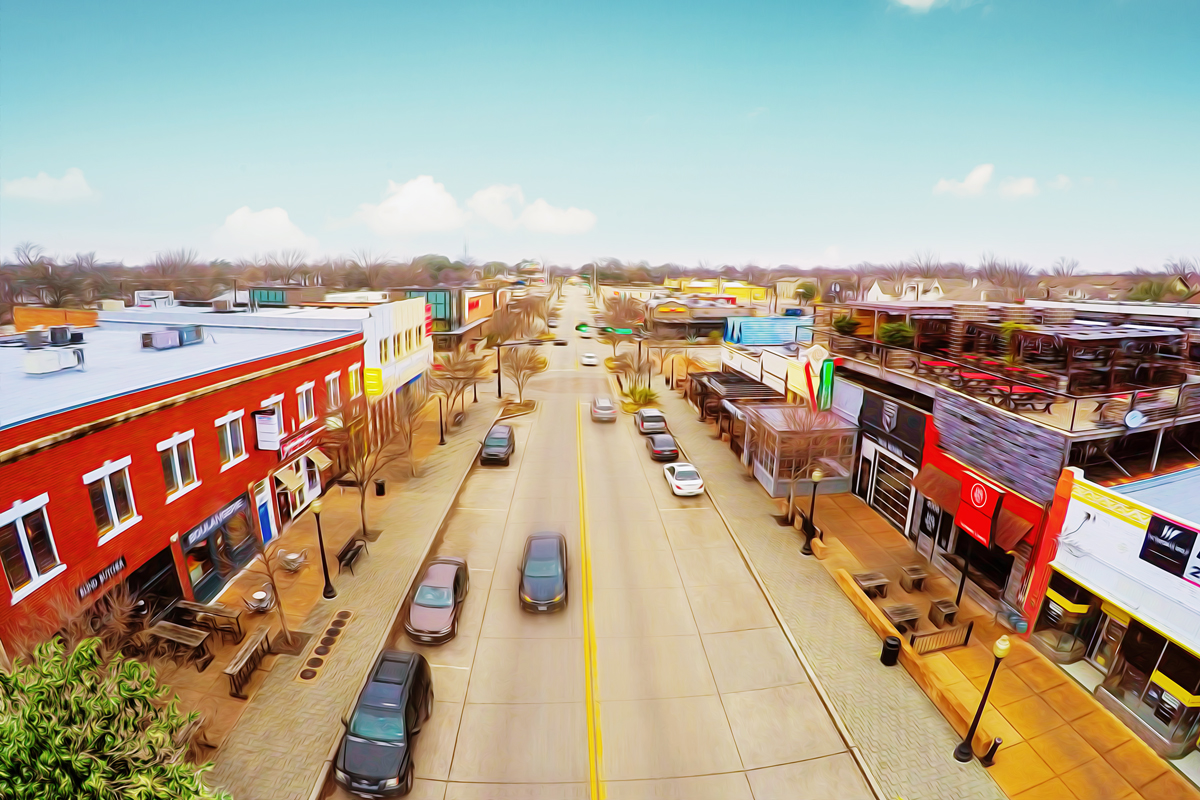The last few months of 2016 were tough for many people, but especially so for proprietors along Lowest Greenville. First, there were three high-profile restaurant closures, including one, the chef-driven soda-and-comfort-food spot Remedy, that came despite stellar reviews and big crowds. Several owners of restaurants and retail along the half-mile entertainment district (Greenville Avenue running from Ross Avenue to Belmont Avenue) saw precipitous revenue drops, declines of more than 30 percent. “I had to use my own money just to cover costs for November,” says Brooks Anderson, co-owner of Rapscallion. “Everyone had the same story. It was really awful.”
How could this be? Ever since former councilwoman Angela Hunt helped pass a midnight-curfew ordinance that helped drive out the seedy bars in 2011, Lowest Greenville has been a new urban success story. It attracted upscale restaurants like Rapscallion, Blind Butcher, and HG Sply Co. that, when added to longtime neighborhood gems like The Libertine Bar, re-energized a nightlife scene that had been near death for a decade. Widening the sidewalks and narrowing the street to two lanes of traffic encouraged people to spend evenings walking from place to place. Truck Yard brought an Austin-style outdoor vibe that rivals the best patio scenes in the city, and a new Trader Joe’s seemed to establish Lowest Greenville as a car-optional live-walk-play space.
When the slowdown occurred, debates raged on Facebook about whether this was the bursting of a nationwide “restaurant bubble.” Some questioned whether Lowest Greenville would survive.
“First of all, things are already rebounding now,” says Jon Hetzel of Madison Partners, landlord to many of the tenants in that area. (We spoke in mid-January.) “The street construction is finally done, and that’s a huge thing. The holidays fell on weird days, and that hurt tenants. But now we have more foot traffic, and some great new spots in the pipeline are set to open.
But increasing nightlife led to battles with neighbors, and by the early ’70s, when the Arcadia was embroiled in a criminal obscenity lawsuit for having shown the X-rated hit Deep Throat, the avenue and its surrounding houses had fallen into disrepair.
“I think people got so concerned because there is this perception out there that we are on our way to being a little Uptown,” says Hetzel, one of a group of neighborhood voices who sat in Hunt’s living room and helped her write the 2011 ordinance. “That’s just never going to happen. Lowest Greenville is a success story, but it will always be at a competitive disadvantage. It will stay vibrant, but it will never be as vibrant as we would like it to be.”
That competitive disadvantage is created by the surrounding neighborhood groups and activists. They remember how unruly the area was just a decade ago and remain vigilant, which is understandable. Violent crime along Lowest Greenville dropped 90 percent from its high, in 2007, to the point when the new urban renovations began taking hold and Trader Joe’s opened, in 2013. But the tension between homeowners and the businesses goes back a long way.
From the time the Arcadia Theater (1927) and the A&P grocery store (1929) opened, Lowest Greenville has been a hot spot. Before Central Expressway was completed, in 1952, Greenville was the route many drivers took to and from Ross Avenue to get downtown or home. But increasing nightlife led to battles with neighbors, and by the early ’70s, when the Arcadia was embroiled in a criminal obscenity lawsuit for having shown the X-rated hit Deep Throat, the avenue and its surrounding houses had fallen into disrepair. (The suburban exodus of the time was, of course, a huge factor.) Urban pioneers in the late ’80s and ’90s improved the area and refurbished some old houses around it, but by the time notorious joints like the Service Bar were sending even more drunks micturating onto homeowners’ lawns at 2 am, the neighborhood had seen enough.
Thus was put in place the ordinance that required a special use permit (SUP) to operate on Lowest Greenville past midnight, when bars make a lot of their money. New tenants came in, traffic was slowed and sidewalks widened to encourage pedestrians, parallel parking added, and trees planted. Combined with the advent of ride-sharing, Lowest Greenville seemed set to draw more people who would live in the area and enjoy the district as part of the neighborhood fabric.
So tenants who have proven themselves (no rash of noise complaints or fights) have renewed their SUPs and been allowed to remain open until 2 am. The owners and landlords understand that they are in some ways paying for the sins of those who have urinated before them. To a person, they fear that any complaints could land them in the crosshairs of homeowners’ groups and the politicians whose ears they have. It’s a reasonable concern—and not just because Melissa Kingston, president of the Dallas Homeowners League, is married to Councilman Philip Kingston, who represents the area.
The owners and operators want to make clear that late 2016’s financial woes emphasize the precarious position in which the truce with homeowners leaves them. And why they get jumpy when more challenges arise.
Consider the recent dust-up over patios. Broadly speaking, restaurants must have a minimum number of parking spots to correspond with interior square footage. In places like Lowest Greenville, patios are excluded from this formula. Neighbors complain this absence of parking for busy patios leads to cars parked in front of their houses. They say that resident parking only (RPO) restrictions are basically unenforceable, certainly in the wee hours. Many blocks therefore want more dedicated parking near the bars and restaurants to stem the patron runoff.
This is a tricky balancing act. Such concerns make sense to any homeowner. But Lowest Greenville business owners counter that more parking reduces the density of the area, patios aren’t consistent sources of patrons or money, and that free valets (paid for by owners and the landlords) and increased ride-sharing options are already reducing the problem. As well, some very quietly point out that the sharp increase in house values is due at least in part to the vibrancy of the neighborhood.
Proponents of the patio-parking ordinance say these are overblown Facebook dramas, as no current business would be subjected to the new parking rules. The owners and landlords counter by saying that once the rules are in place, they can too easily change or be interpreted based on the political winds.
As proof, they point to Ships Lounge, a longtime dive bar just south of Ross, off Greenville, that everyone in local media pretends to frequent. When it went under in July 2015, Jason Boso—owner of Truck Yard and an actual Ships frequenter—wanted to reopen it. He decided not to when his SUP to stay open past midnight was denied, even though Ships had always stayed open until 2 am. The eventual purchasers, the owners of Nora, a quiet Afghan-food eatery on Lowest Greenville, said they could make it work closing at midnight and were easily approved. Neighborhood watchdogs will tell you that’s because they agreed to the rules that have spurred revitalization. Lowest Greenville wags will tell you it’s personal: Boso and his big patio are disliked by neighborhood activists, while Nora suffers from no such ill will.
“The bottom line,” says one owner, “is you have to play ball with the neighborhood groups or the city will come back and change the rules. That’s just the reality. That’s fine. We’ve all adjusted. So long as they don’t make it any harder than it already is, like this patio thing. We can operate and make money here. It’s a fantastic area. People love it. It’s working. We just can’t do it if they do something stupid and slice our margins any thinner. They’ll cut bone.”
I should be able to name the above person, but neither of us wants to be responsible for aggravating the watchdogs. I like bars that stay open past midnight, just as they do in the best cities all across America.
Which gets to the point: this delicate dance between potentially noisy late-night joints and their more domesticated neighbors happens in every major city. It seems to me, though, that folks in other city centers around the country realize that if the price of living in a great neighborhood is having some patrons park at your curb until the wee hours, then it’s one worth paying.






